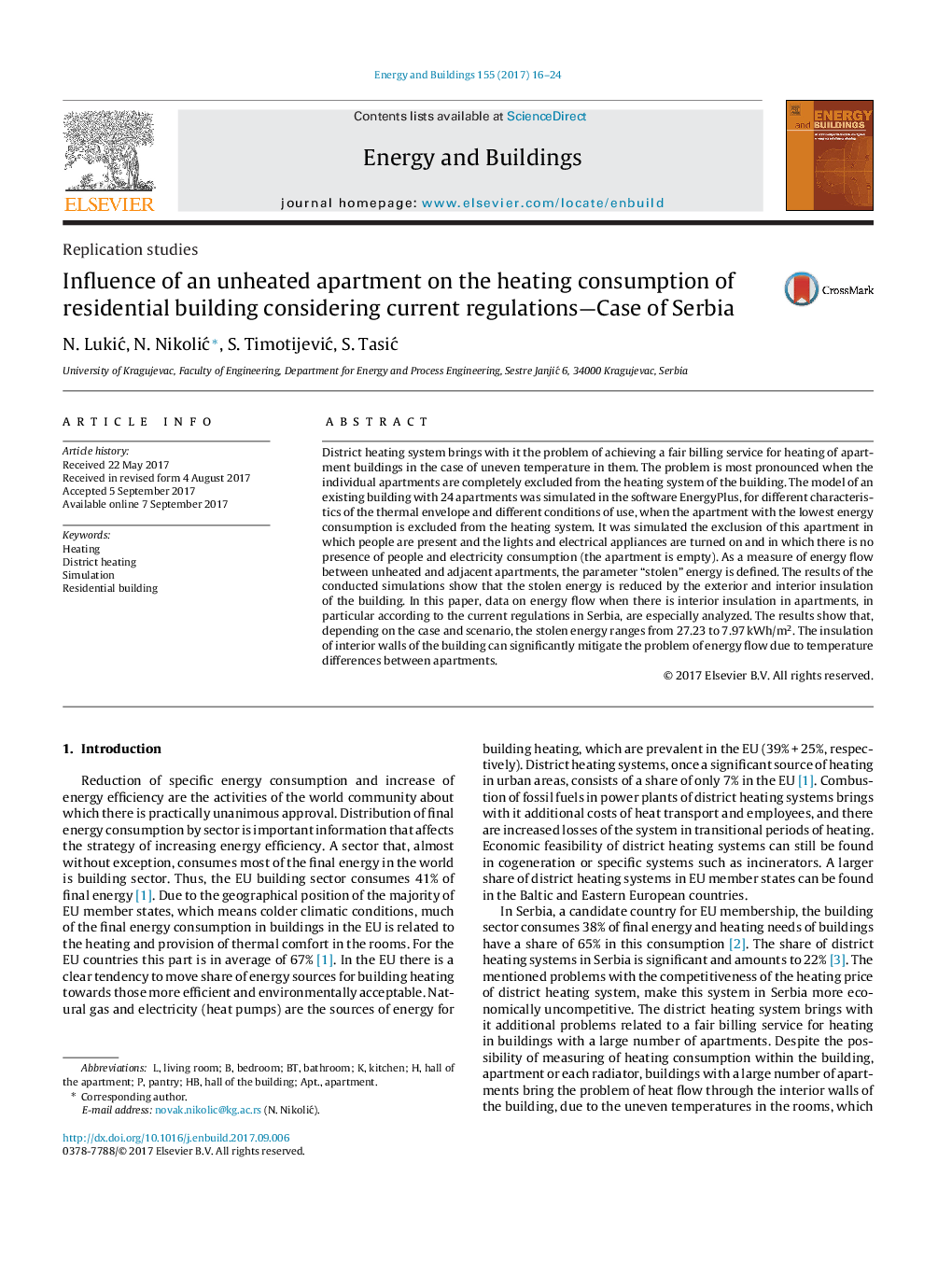| Article ID | Journal | Published Year | Pages | File Type |
|---|---|---|---|---|
| 4918838 | Energy and Buildings | 2017 | 9 Pages |
Abstract
District heating system brings with it the problem of achieving a fair billing service for heating of apartment buildings in the case of uneven temperature in them. The problem is most pronounced when the individual apartments are completely excluded from the heating system of the building. The model of an existing building with 24 apartments was simulated in the software EnergyPlus, for different characteristics of the thermal envelope and different conditions of use, when the apartment with the lowest energy consumption is excluded from the heating system. It was simulated the exclusion of this apartment in which people are present and the lights and electrical appliances are turned on and in which there is no presence of people and electricity consumption (the apartment is empty). As a measure of energy flow between unheated and adjacent apartments, the parameter “stolen” energy is defined. The results of the conducted simulations show that the stolen energy is reduced by the exterior and interior insulation of the building. In this paper, data on energy flow when there is interior insulation in apartments, in particular according to the current regulations in Serbia, are especially analyzed. The results show that, depending on the case and scenario, the stolen energy ranges from 27.23 to 7.97Â kWh/m2. The insulation of interior walls of the building can significantly mitigate the problem of energy flow due to temperature differences between apartments.
Related Topics
Physical Sciences and Engineering
Energy
Renewable Energy, Sustainability and the Environment
Authors
N. LukiÄ, N. NikoliÄ, S. TimotijeviÄ, S. TasiÄ,
